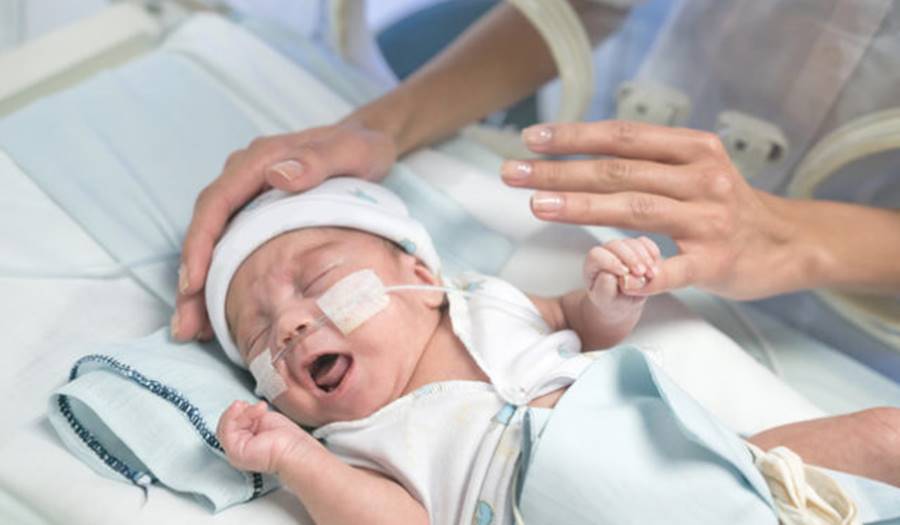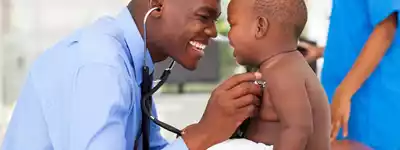
Vaccine Preventable Diseases
9/7/2020
WHAT DISEASES DO VACCINES PREVENT?
Vaccines are a safe and effective way to prevent disease. Vaccines prevent thousands of deaths every year that would occur due to these diseases. Luckily, vaccines have been so successful that most adults have never seen the diseases we vaccinate against. It is important remember the diseases and the consequences of those diseases. Many of these diseases are not common in the United States but as we have seen with COVID-19, our community includes the world and diseases travel fast from country to country!

History of Vaccines
Smallpox
Evidence shows that the Chinese used smallpox inoculation (giving someone a small dose of the virus) as early as 1000. There is also evidence of this in Africa and Turkey.
In 1796, British doctor Edward Jenner noticed that dairymaids who had a mild case of cowpox virus did not get smallpox. Dr. Jenner took a small amount of fluid from an active cowpox sore, scratched it onto a boy’s arm and then exposed him to smallpox. He did not develop smallpox disease, and this was the start of smallpox vaccination! Smallpox was eradicated from the world in 1977.
Rabies
In the 1870s, Dr. Louis Pasteur tried giving animals weakened forms of viruses. He applied what he learned to making a vaccine against rabies. He unknowingly created the first inactivated vaccine. On July 6, 1885 he used it successfully on a 9 year old boy bitten by a rabid dog. The boy did not contract rabies.
Diphtheria, Tetanus, and Pertussis
In 1923, Alexander Glenny was able to make inactivated tetanus toxin. His method was used to make a vaccine against diphtheria in 1928, and against pertussis in 1848.
Polio
In the mid 1900s, Jonas Salk, MD and Albert Sabin MD made an inactivated polio and a live polio vaccine. Since the development of this vaccine, the United States and Western Hemisphere were able to eliminate polio in 1991. As of 2014, polio was only found in 4 countries worldwide.
Current day
Molecular genetics has changed vaccine research. The future of vaccine development includes new vaccine delivery systems based on DNA, new adjuvants (vaccine additives that make them work better), more effective vaccines, and new vaccines against common but dangerous viruses such as cytomegalovirus, herpes simplex virus, and HIV.
What diseases do vaccines prevent today?
Diphtheria
Diphtheria is bacteria spread through respiratory droplets and open sores. The bacteria create a toxin that causes a thick covering in the back of the throat and nose., weakness, sore throat, mild fever, and swollen glands It can lead to difficulty breathing, paralysis, heart failure, kidney failure and death.
Tetanus
Tetanus is caused by a bacterial infection. The spores of this bacteria are found everywhere in the environment including dirt, dust and manure. The spores enter your body through wounds that have dirt, spit, or manure in them, puncture wounds like stepping on a nail, burns, crush injuries, insect bites, dental infections, sores, skin infections, Once the spores enter your body, the bacteria forms and releases a toxin. This tonsil results in painful muscle stiffness, lockjaw, trouble swallowing, seizures, headaches, fever, and changes to your heart rate and blood pressure.
Pertussis (Whooping cough)
Pertussis is caused by bacteria. It is very contagious. Pertussis bacteria is spread through respiratory droplets. In your body, the bacteria release a toxin that kills off cilia, the little hairs in our lungs that help keep them clean. Early symptoms of pertussis include cold like symptoms, fever, and a cough. Later symptoms result in coughing fits, vomiting during coughing, and fatigue. Babies can develop pauses in breathing. Pertussis is very dangerous to babies and over 50% of babies who develop Pertussis will need to be hospitalized. These babies are at risk for pneumonia, convulsions, brain inflammation, and death. Older children can fracture ribs from the violent coughing, lose weight, lose bladder control, faint while coughing, and develop pneumonia.
Mumps
Mumps is a virus that is spread through respiratory droplets or saliva. It can cause puffy cheeks, swollen parotid salivary glands and jaw, fever, headaches, muscle aches, fatigue, nausea and vomiting. Mumps can result in inflammation of the testicles, ovaries or breast tissue, inflammation of the pancreas, the brain or the covering of the brain. It can also result in deafness.
Measles
Measles is a highly contagious virus that spreads through coughing or sneezing. Measles virus can live for up to 2 hours in the air! Over 90% of people close to the person who has measles virus will become sick. Measles causes cold like symptoms such as runny nose. It also causes conjunctivitis, high fever, cough, and a rash Patients can also get white spots called Koplik spots in their mouth. Measles virus can have complications such as ear infections, pneumonia and encephalitis (brain inflammation). After measles infection it will take your immune system almost 3 years to recover!
Rubella (or German Measles)
Rubella is a virus spread by coughing and sneezing. A pregnant mom can spread rubella to her baby. Symptoms of rubella include low grade fever, headache, redness of the whites of the eyes, achiness, swollen lymph nodes, cough, and runny nose. Rubella can result in complications such as arthritis, brain infections, and bleeding problems. The most serious complication is transmitting the virus to a developing baby when mom is pregnant. It can result in miscarriage or death just after birth. It can also result in the baby having heart problems, hearing loss, blindness, intellectual disability, and liver and spleen issues.

Pneumococcal
Pneumococcal disease is caused by bacteria that spread through direct contact with saliva or mucus. Children under 2 at highest risk of contracting pneumococcal. Pneumococcal disease causes fever, cough, difficulty breathing, and chest pain. It can also result in pneumonia, meningitis (a brain infection), sepsis, and ear infections.
Haemophilus influenza type B (HiB)
HiB is a bacterial infection spread by respiratory droplets. HiB is most likely to cause children under 5 to become sick. HiB causes mild illnesses like ear infections or bronchitis but can also result in severe infections such as pneumonia, swelling of the throat causing difficulty breathing, infections in bones, joints, blood, and the heart.
Human Papillomavirus (HPV)
HPV is a virus spread through skin to skin contact. Over 50% of the population is infected before turning 18 years old. HPV results in genital warts. Certain strains of HPV result in cervical cancer, vaginal/vulvar cancers, anal cancers, throat cancers and penile cancers.
Varicella (Chicken pox)
Varicella is a virus spread though respiratory droplets and direct contact with the rash, Varicella causes fever, headache, fatigue and a blister like rash. Chicken pox virus is normally very mild, but it can have complications including bacterial infections of the skin, pneumonia, dehydration, inflammation of the brain, and death.

Rotavirus
Rotavirus is a virus spread by contact with unwashed hands, objects or food that is infected via stool. Rotavirus causes severe watery diarrhea, vomiting, fever, and abdominal pain. It commonly results in severe dehydration.
Hepatitis A
Hepatitis A is a liver infection caused by the hepatitis A virus. Hepatitis A is spread through stool and blood. The virus spreads when someone eats or drinks food or water that has microscopic amounts of the virus. Symptoms include fatigue, nausea, stomach pain and jaundice that lasts for 2 months.
Hepatitis B
Hepatitis B is a liver infection caused by Hepatitis B virus. The virus is spread through body fluids. Many people who have the virus are asymptomatic, but symptoms can include fatigue, poor appetite, stomach pain, nausea and jaundice. The virus can also cause a chronic, long-term infection that can damage the liver in 2-6% of adults. Over 90% of infants that contract Hepatitis B in utero from their mother will have chronic infection.
We all hate when our children get sick, even with a common cold. There are germs that can make us far sicker than a cold or sore throat! We are lucky to live during a time where we can prevent our children from suffering from these illnesses. Vaccines have been shown to be safe and effective. If you have any questions about vaccines, vaccine preventable diseases, or vaccine schedules, you can contact us or refer to information on a reputable source like cdc.gov.
Children’s Health Care of Newburyport, Massachusetts and Haverhill, Massachusetts is a pediatric healthcare practice providing care for families across the North Shore, Merrimack Valley, southern New Hampshire, and the Seacoast regions. The Children’s Health Care team includes pediatricians and pediatric nurse practitioners who provide comprehensive pediatric health care for children, including newborns, toddlers, school aged children, adolescents, and young adults. Our child-centered and family-focused approach covers preventative and urgent care, immunizations, and specialist referrals. Our services include an on-site pediatric nutritionist, special needs care coordinator, and social workers. We also have walk-in appointments available at all of our locations for acute sick visits. Please visit chcmass.com where you will find information about our pediatric doctors, nurse practitioners, as well as our hours and services.
Disclaimer: this health information is for educational purposes only. You, the reader, assume full responsibility for how you choose to use it.








